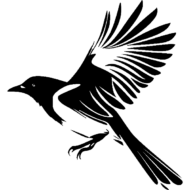Some vaguely related photos from Milan Design Week. Many cool
seating surfaces. Some that I would hesitate to call chairs.
http://www.core77.com/blog/milan09/milan_design_week_09_tuttobene_13287.asp
Design as a profession is currently having a crisis of relevancy.
Trying to figure out how it can value to society rather than merely
add value to the bottom line. As is the case in all such thrashes
there are extremes that make the entire exercise look silly.
http://www.core77.com/blog/education/studying_ethically_responsible_innovation_in_france_13284.asp
Most cell phone apps don’t really require the context of being on your
cell phone to make sense. This accident reporting app from Nationwide
does a nice job of it.
http://www.wired.com/autopia/2009/04/nationwide-is-on-your-iphone/
David Wienberger a deep thinker about information and meta-data muses
on the muddle of Pirate Bay. He draws no conclusion. Which is, I
think, the only conclusion.
http://www.everythingismiscellaneous.com/2009/04/25/the-pirate-bay-and-the-pirate-google/
A poster for Antennasia (Japanese electronica band) that is cool the
first time you look at it and mesmerizing the second, third, etc.
http://sleepmachine.tumblr.com/post/100246656/suyhnc-yukemuri-poster2009-1-jpg
Someone else riding one of my old hobby-horses. Why MBAs aren’t
qualified to actually manage anything. (Australian Broadcast Co.)
audio at the top of the page, transcript below:
http://www.abc.net.au/rn/backgroundbriefing/stories/2009/2526727.htm
I can’t find confirmation of the incident beyond this report:
http://www.gadling.com/2009/04/26/air-france-jet-diverts-after-being-told-to-stay-clear-of-us-airs/
Ospina’s account;
http://progreso-weekly.com/index.php?option=com_content&task=view&id=922&Itemid=1
A pretty bike. (And I like the idea that Simpson Race Products has an
art director.)
http://www.bikeexif.com/yamaha-sr500-dirt-tracker
Continuing the Lego-ification of the universe.
http://www.etsy.com/shop.php?user_id=5905455#
